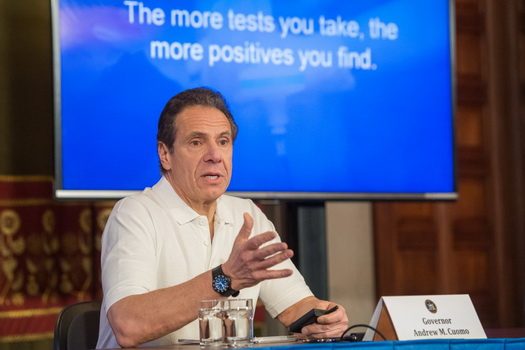
We Are In Phase 2: So What Does That Actually Mean?
by 1010Win.com and CrownHeights.info
Two weeks after entering New York State Governor Andrew Cuomo’s Phase 1 of reopening, New York City successfully reached Phase 2. But now that we are here, what has changed?
Lets take a look at what will be opening and what will not.
Restaurants, “food service establishments” — including food trucks — and “other food concessions” will be able to serve food outdoors and keep offering take-out and delivery, with restrictions:
- Tables with seats “must be at least 6 feet from any other table, seat, patron or pedestrian thoroughfare or corridor.”
- Face coverings are mandatory, “except while seated; provided that the patron is over the age of two and able to medically tolerate one.”
Patrons who are sitting at the same table have to be members of the same party, “with a maximum of 10 people per table.” Communal tables aren’t permitted unless individual parties can still maintain a six-foot distance. - Eateries must “clearly signal” six-foot spacing for patrons waiting in line to pick up food, order, be seated or use the bathroom.
- Venues should have separate entrances and exits for patrons and employees, “where possible.”
Hair salons and barbershops will be able to reopen at 50% capacity, with restrictions:
- Customers should be at least six feet apart, and waiting rooms “must be closed.”
- Both employees and customers must wear face coverings, and employees must wear gloves and “clean smocks or gowns.”
- Walk-in customers who can’t get an appointment right away “should be provided a time to return.”
- Any service that requires removing a face mask, including beard trims, cannot be provided.
- Employees who are cutting hair or “performing services directly” should get tested for COVID-19 every 14 days while Phase II remains in effect, and “mandatory health screening practices” should be in effect.
Non-essential retail stores can reopen to customers at 50% capacity, with restrictions:
- Customers must wear face coverings and stay six feet apart.
- Stores should post social distancing markers denoting six feet of space at cash registers and in the aisles
- Fitting rooms should have “appropriate cleaning and disinfection supplies for employee and customer use, including hand sanitizer.”
Offices can reopen at 50% capacity if they fall under the following categories, according to city guidelines: Professional services, non-profit, technology, administrative support, higher education administration (excluding full campus reopening).
- Employees must keep six feet apart, and wear face coverings any time they come within six feet of another person in the office
- Small spaces like elevators should be limited to one person at a time, “unless all individuals are wearing face coverings.” If more than one person is riding in an elevator, its occupancy should be at a maximum of 50 percent.
- Common areas including gyms, pools and game rooms must remain closed
- Shifts should be staggered if possible, and employees who have been working from home should be encouraged to keep doing so
Commercial/non-residential property management entities and related activities can reopen and resume, with the following restrictions:
- Buildings can reopen to employers and employees at a maximum of 50 percent occupancy.
- Employees must stay at least six feet apart, “unless safety of the core activity requires a shorter distance.”
- Workers and visitors should wear face coverings whenever they are within six feet of another person in the building.
- Elevators occupied by more than one person should be kept under 50 percent capacity.
- Non-essential common areas like game rooms should be closed, and shared workstations should be cleaned between users.
Real estate services, including residential property management entities; real estate salespeople/brokers; building inspectors; building appraisers; and related activities can resume, with adequate social distancing measures and the wearing of face coverings.
Vehicle sales, leases and rental activities can resume, with social distancing measures and the following restrictions:
- Rental offices and other venues should be limited to maximum 50 percent capacity, and customers should be seated at least six feet apart in waiting areas.
- An employee accompanying a customer on a test drive must sit “in the seat with the furthest possible distance from the customer(s) and wear an appropriate face covering.” Customers accompanied by an employee on a test drive must wear face coverings as well.
The following retail rental, repair and cleaning activities can reopen: Retail rental, retail repair, retail cleaning, electronics repair, equipment rental, clothing rental, laundromats, clothing/fabric cleaning services, residential cleaning services.
Playgrounds across the city will also reopen, Mayor Bill de Blasio said during his daily briefing on Thursday.
Here’s what not opening/resuming, per state and city guidelines:
- Malls, with the exception of stores with their own external entrances, which are included under non-essential retail stores
Indoor dining - Large gathering/event venues, including concert venues and conference venues
- Gyms, fitness centers and in-person exercise classes
- Video lottery and casino gaming facilities
- Movie theaters, with the exception of drive-in theaters
- “Places of public amusement,” including amusement parks, water parks, aquariums, zoos, arcades, children’s play centers and bowling alleys
- Nail salons, tattoo parlors, and “non-haircutting-related personal care services or activities, including but not limited to: beard trimming, nose hair trimming, facials, manicures/pedicures, makeup application, threading, tweezing or waxing.”












